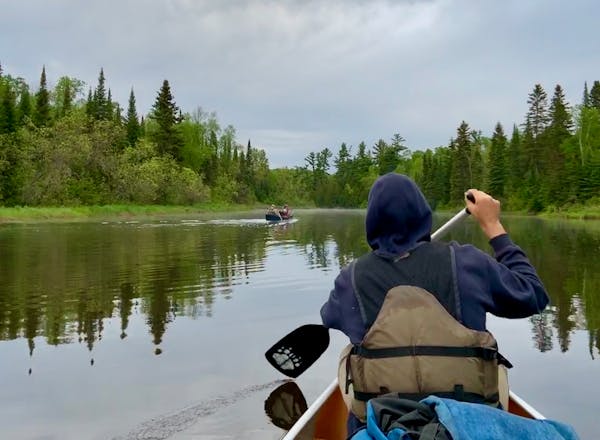No topic today offers so few clear answers as guns.
America is a violent society and guns help make it so, that much is evident. And so many guns exist in the country — about a third of all Americans own guns — with countless more being manufactured and sold each week, that any path to a future in which firearms play a lesser role in the nation's day-to-day life is difficult to imagine.
Few Americans are more frustrated about gun violence than legal gun owners, among them especially hunters and target shooters, who represent about 40% of U.S. gun owners (two-thirds of Americans who own guns, meanwhile, do so primarily for protection).
Guns used for hunting and target shooting provide achievement-based recreation that ends with food being put on the table or, as satisfactorily, clays being broken in midair or bull's-eyes being hit.
From these pursuits, lifestyles are often molded that instill in adherents confidence and a belief that right ways and wrong ways exist to do things, and that the right ways are better, and safer.
Yet recreation is too lightweight of a descriptor to convey what guns provide for many legal owners. Not only can firearms handed down among family members galvanize generations in ways other heirlooms can't, but purchasing a gun for sporting pursuits regardless of its cost or quality necessarily implies a belief in, and an intent to participate in, this nation's unique freedoms.
With a cased 12 gauge in the backseat and a map of state wildlife management areas, any Minnesotan old enough to drive can hike virtually unlimited public acreage on crisp fall days hoping to put up a pheasant, ruffed grouse or duck or goose. The same opportunities hold true for slug-gun or rifle owners wanting to bag a deer.
Such opportunities are virtually unique to America among nations, and sportsmen and women who partake of them often soon become ardent defenders of their components — public lands, high-quality wildlife habitat and, yes, the right to purchase, own and shoot, legally, guns of their choosing.
Not many decades ago, a majority of states, among them certainly Minnesota, enabled, validated or at least condoned these and other firearms-based lifestyles.
On opening day of the state's 1950 pheasant season, for example, R.E. Conn and W.J. Wallace, co-chairs of the state's American Legion "shell committee," delivered cases of ammunition to 125 Minnesota communities, with a goal of killing 2,500 pheasants on opening weekend to feed disabled veterans.
One can only imagine how quickly a similar ammo distribution idea would be shot down today, if not for liability reasons, then by animal rights proponents, gun control advocates or, most worrisome of all, social media influencers of one stripe or another — never mind that due to habitat losses in the last half-century, killing 2,500 pheasants to feed disabled vets or anyone else might prove an unattainable opening-day goal.
To this last point, the demise due to development and industrialized agriculture of so many wild places where wild critters can exist and people can enjoy them according to applicable laws and ethics underscores that, while the world seems to be growing smaller for everyone, few sense this contraction more than hunters and target shooters.
Not only have habitat losses reduced in many cases the sizes of game populations pursued by hunters, encroachment by ever-expanding suburbs and other communities has forced many gun ranges out of business and threatened the existence of still more.
Add to this the seeming inevitability of American urbanization, and with it the diminishment of rural mores, practices and lifestyles, many of which were gun-infused, and throwing in also the seeming inevitability of evermore gun "safety'' laws coming down the pike, and the hardened defense among gun advocates of "2A'' — the Second Amendment right to keep and bear arms — is, if nothing else, understandable.
Many legal gun owners fear that this loss of rights and opportunities, plus the threatened further encroachment thereupon, are among many signals that American culture, if not Western culture in toto, is, and has been for some time, making wrong choices, electing among other miscalculations to focus on gun ownership and not gun crime — especially given that the vast majority of gun crimes, about 80%, are committed by people who illegally possess guns.
Minneapolis and St. Paul make the point.
Reasonable people can disagree whether carjackings, shootings, racing in the street and generally uncivil behavior in the metro are "out of control," "commonplace," or simply "occurs more than we would like."
But few Twin Cities residents would disagree that fear of violence, particularly gun violence, pervades their day-to-day lives.
Yet the narrative that pulses through the legislative ether is that Minnesota needs more gun ownership laws, not stricter gun violence punishments.
OK, fair enough.
Perhaps a red flag law in Minnesota that allows for removal of guns from people believed to be dangerous to themselves or others will reduce suicide or other gun violence rates. Ditto additional background checks among prospective gun owners.
However inevitable these and other regulatory proposals might be, Minnesota hunters and target shooters will continue doing what they do, and have done for generations — using guns responsibly, and legally.
Anderson: He paddled solo into the BWCAW and didn't come back

Anderson: In early June, Minnesota fish are begging to be caught. Won't you help?


